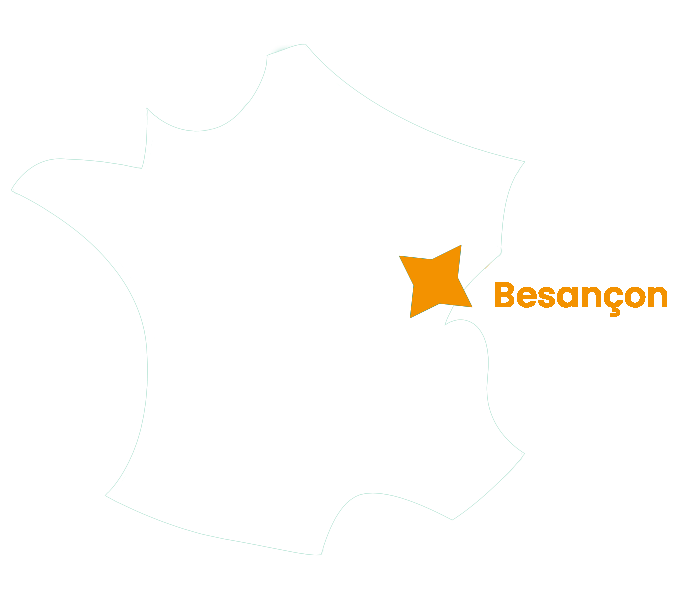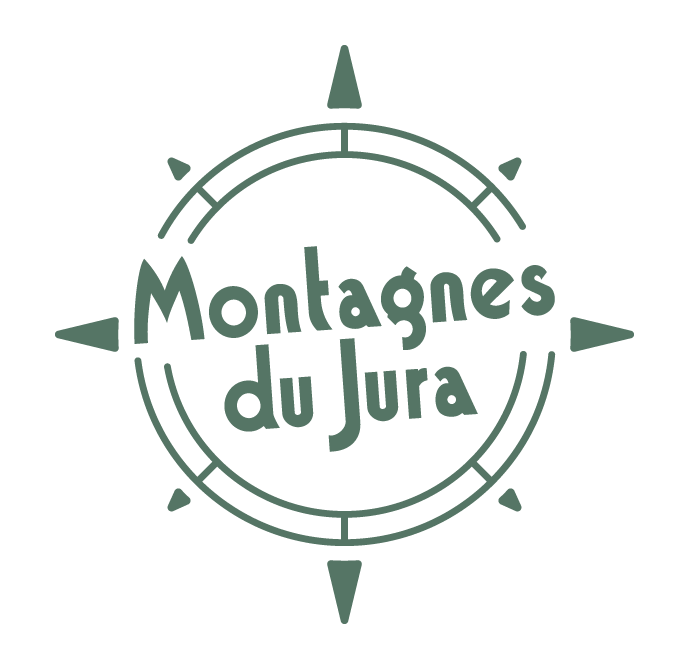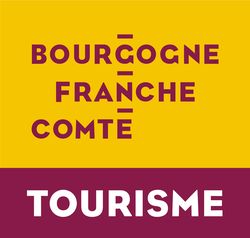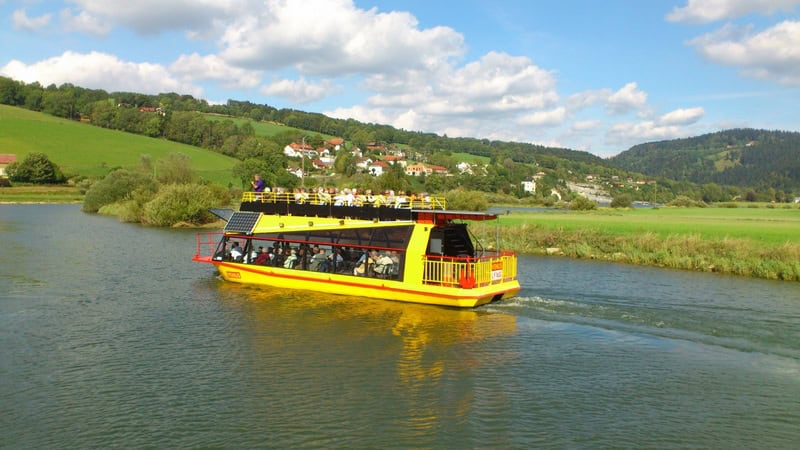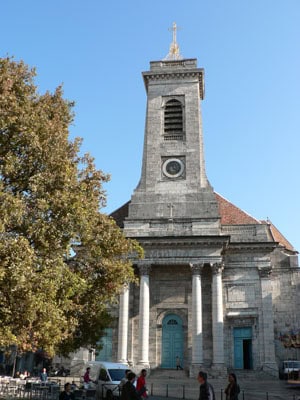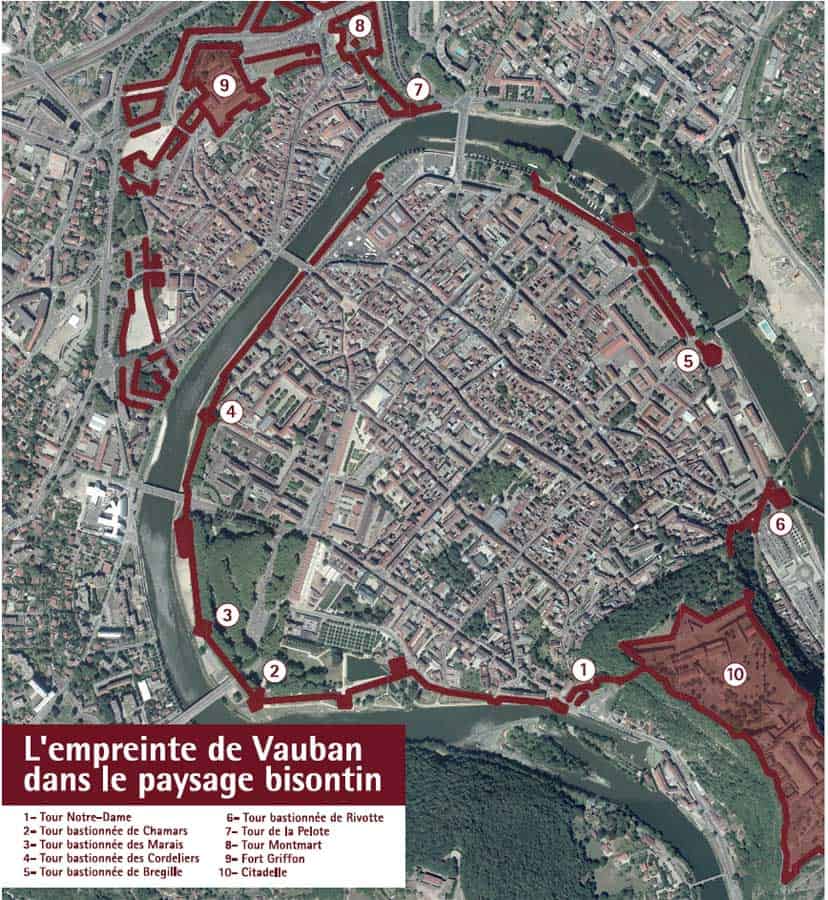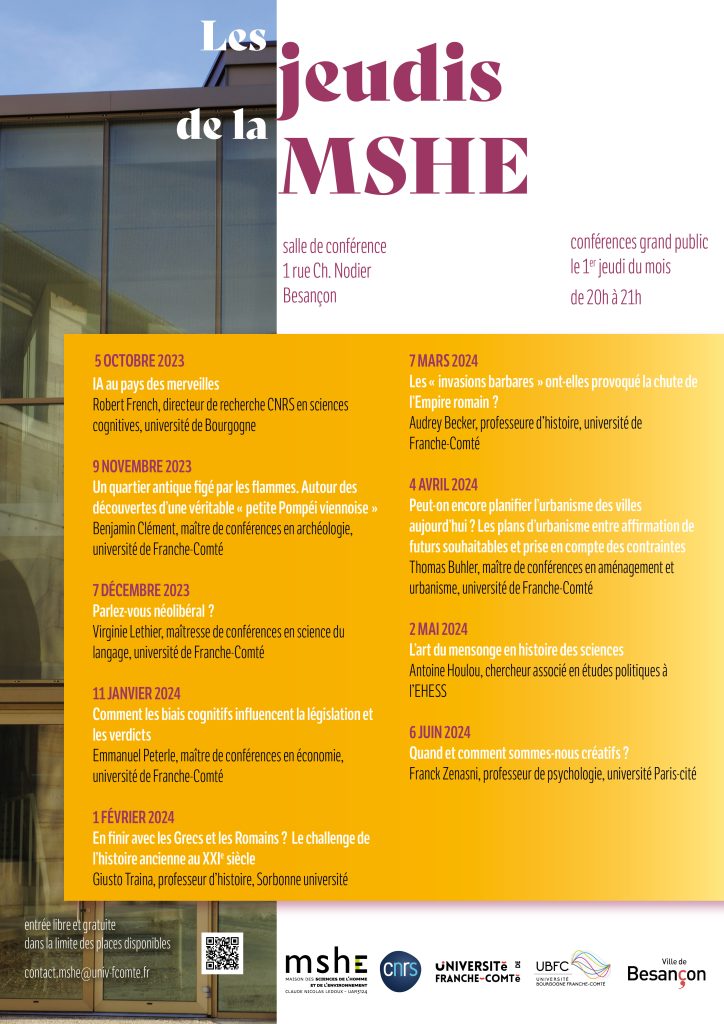- Home
- Destination
- Exceptional heritages
Exceptional heritages
In Besançon, let yourself be surprised by the richness of a 2000 year old heritage. From Antiquity to nowadays, follow the traces of the builders and great men who have left their mark on the city. From the top of the Citadelle, a Unesco World Heritage Site, you can overlook the city center and its fortified walls built by Vauban. From there, you are only two steps away from the Black Gate built by the Romans, a handful of seconds away from Victor Hugo’s birthplace, on a square that also saw the birth of the Lumière brothers. No doubt, you are here in a city of art and history rich in exceptional sites, and no less than 5 museums. Among them the Museum of Fine Arts and Archaeology which houses the oldest public collection in France. And there is much more to discover during our guided or signposted tours…
The Vauban fortifications of Besançon listed by Unesco
In Besançon, the Vauban fortifications are a must, dominated by the citadel that sits majestically on a rocky promontory. Classified as a UNESCO World Heritage Site, they are an integral part of the city. However, the ramparts here predate the conquest of Franche-Comté by Louis XIV. Archaeological excavations show that the site was already fortified in the 1st century BC!
From Vesontio to Besançon, 2000 years of history
From the ancient Gallic oppidum to the modern city through Vesontio the Roman, Besançon is an open book on 20 centuries of history. Through its archeological remains, during a historical visit with a guide, or through its listed monuments and museums, dive into the rich past of our city labeled Art and History.
Famous personalities linked to Besançon
If there was a place for great men in Besançon, it would certainly be the Place Victor Hugo. On this relatively small space were born the Brothers of Light, Charles Nodier, and the author of Les Misérables who gave it his name. But many other personalities are associated with the city, including writers and artists, scientists and inventors, political figures, or famous philosophers…
Discover the Grand Besançon during the European Heritage Days
What if you took advantage of this weekend dedicated to heritage and culture to visit Besançon and its surroundings! What better opportunity than the European Heritage Days to discover the richness of our territory. In addition to free access to many tourist sites, you will be able to enter places exceptionally open to the public. On the program: museums and monuments, guided tours and new animations…


